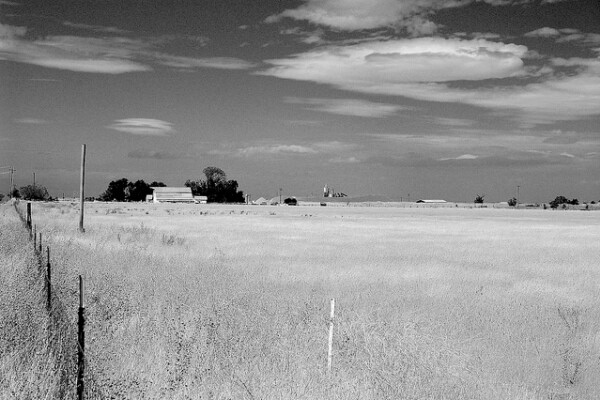California's Agriculture Makes a Bigger Impact on the Economy Than You Think

As California's ongoing drought continues to break records, proposals for water conservation are becoming increasingly desperate. One such proposal that continues to make the rounds is to force the state's agricultural industry to use less water. The Washington Post was merely one editorial voice that made this argument.
On the surface, it makes all sorts of sense. Agriculture uses 80 percent of the state's water, goes the argument, but produces only two percent of its economic activity.
However, a new report entitled The Economic Impact of Food and Beverage Processing in California does a lot to refute those numbers.
The concept of the report is simple: How much money does the state's food and beverage industry actually contribute to the economy? This means not just the $50 billion or so in products that farmers sell on an annual basis, but also other contributions like jobs. And not just jobs on the farms themselves, but also in industries that are directly associated with the growing and supplying food.
"We took the primary impacts, which are available publicly, and then used a well-known input/output model called IMPLANT," said Richard Sexton, an Agricultural and Resource Economics professor at UC Davis and one of the study's authors. "The idea is that we want to determine how those impacts diffuse as they work their way through the economy."
For example, let's say you're growing tomatoes, but are told you can't use water anymore. Obviously, say goodbye to the economic factors of selling tomatoes in the marketplace. Less obviously, you also need to say goodbye to the economy that is ancillary to that production. "You're going to have a significant input cost for containers," said Sexton. "Cans, boxes, crates. Typically those are going to be manufactured in the state, in an area fairly close to the processing itself, just in terms of logistics and transport cost."
Or if you're processing milk -- dairy is California's largest agricultural industry -- you're not just going to lose the $3.37 billion from dairy sales. According to the report:
[T]he total economic impact of dairy processing in California is $15.6 billion. We estimate that the dairy sector directly accounts for 18,000 jobs, and that another nearly 122,000 jobs are generated from the indirect and induced impacts, resulting in over 139,000 California jobs that can be traced directly or indirectly to the dairy processing sector.
In all, the report modifies the $50 billion and "two percent" impact on California's economy that often gets quoted to something a bit larger. When you consider the entire impact that the food and beverage sector of the state adds to the economy, there's about $82 billion worth of value added, as well as nearly 760,000 total jobs. (The analysis took place using economic results from 2012.) All of which puts the state's agricultural economy in a different light:
Based upon its direct value-added contribution, the food and beverage processing sector is the third largest manufacturing sector in California, comprising 9.2% of the state's manufacturing value added, and trailing only electronic and computer equipment (34.5%) and chemical manufacturing (15.8%).
These, then, are the numbers that need to be considered when we debate instituting water restrictions on the state's agriculture economy. It's not nearly as simple as losing the direct sales that comes from growing products. It's far more complex than that.


